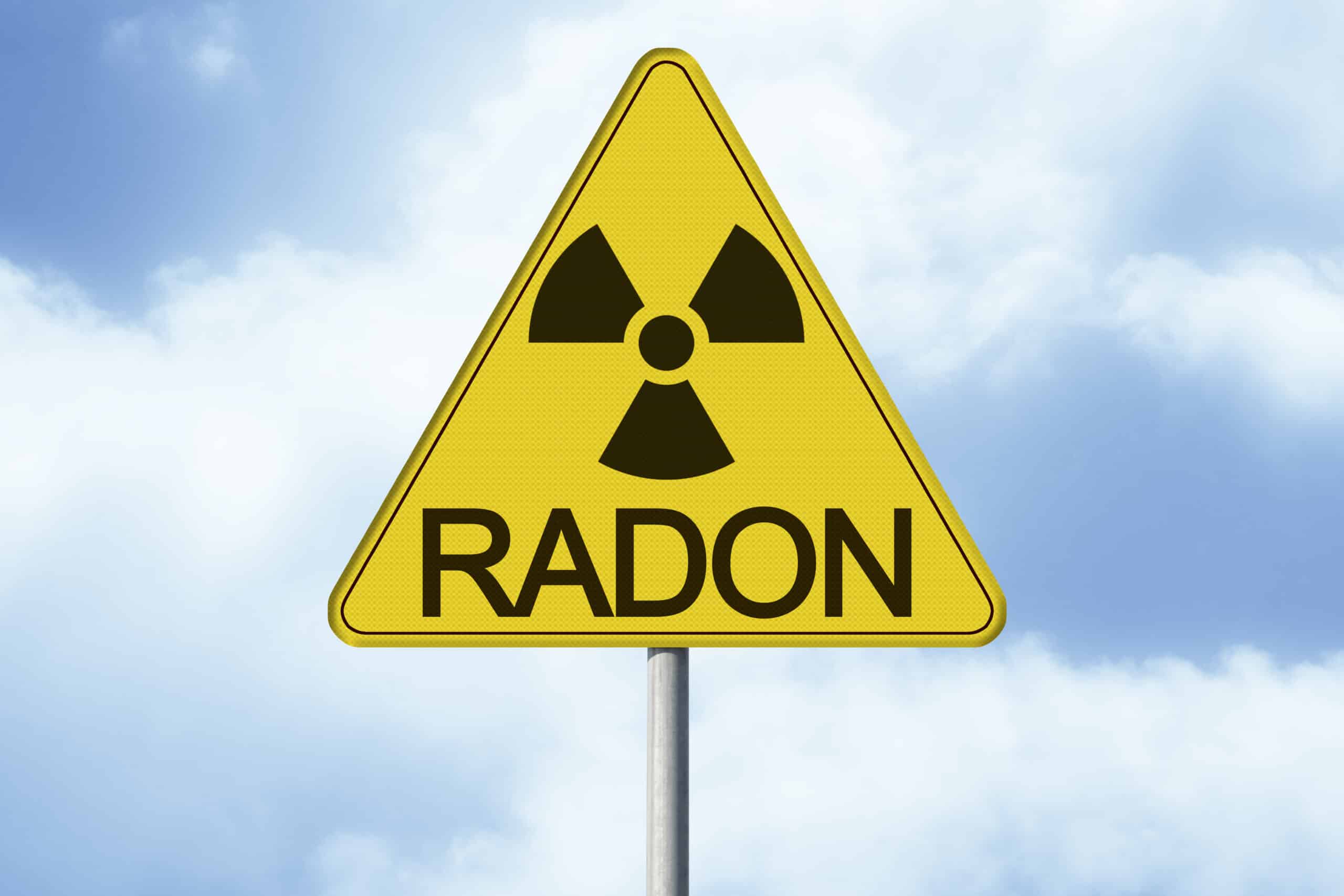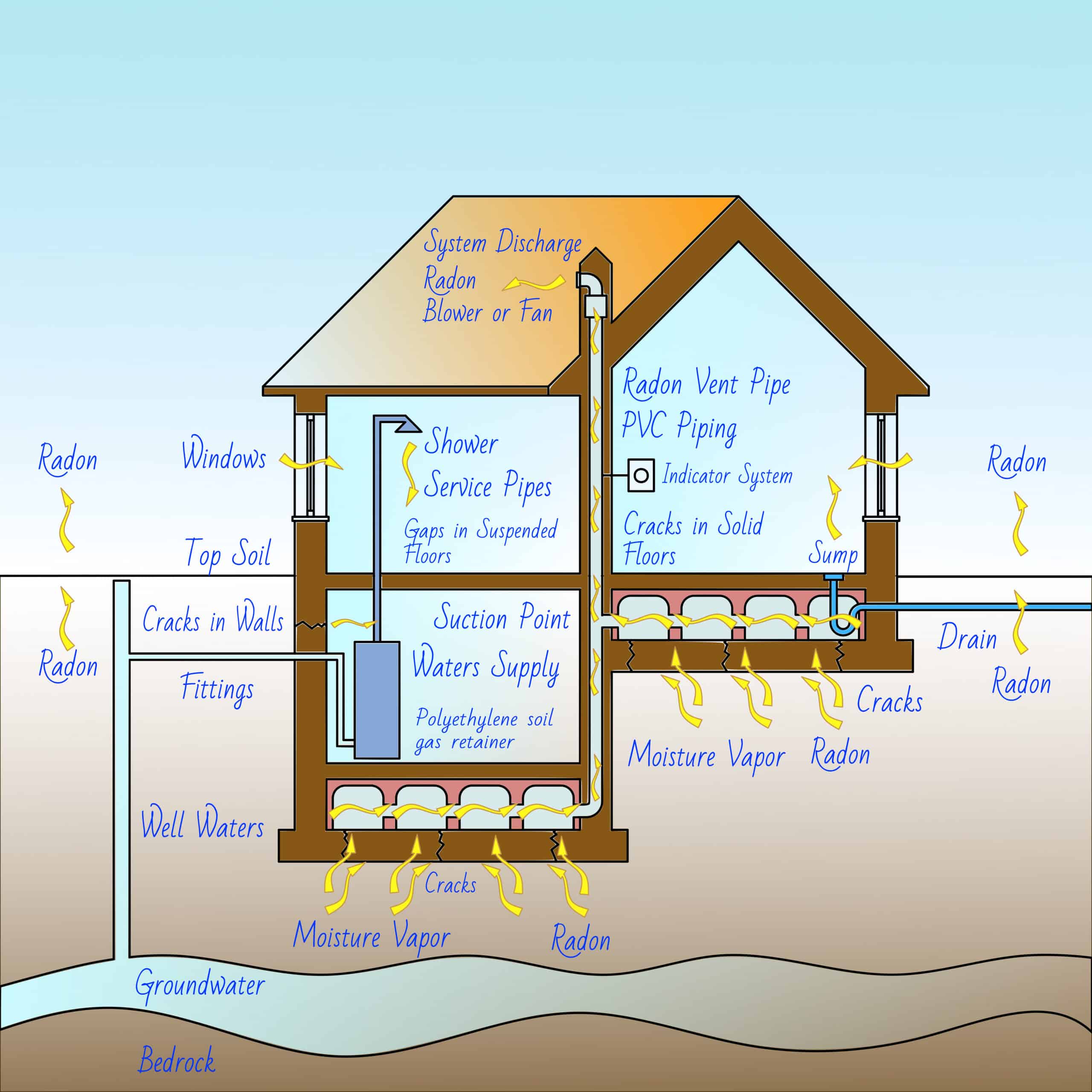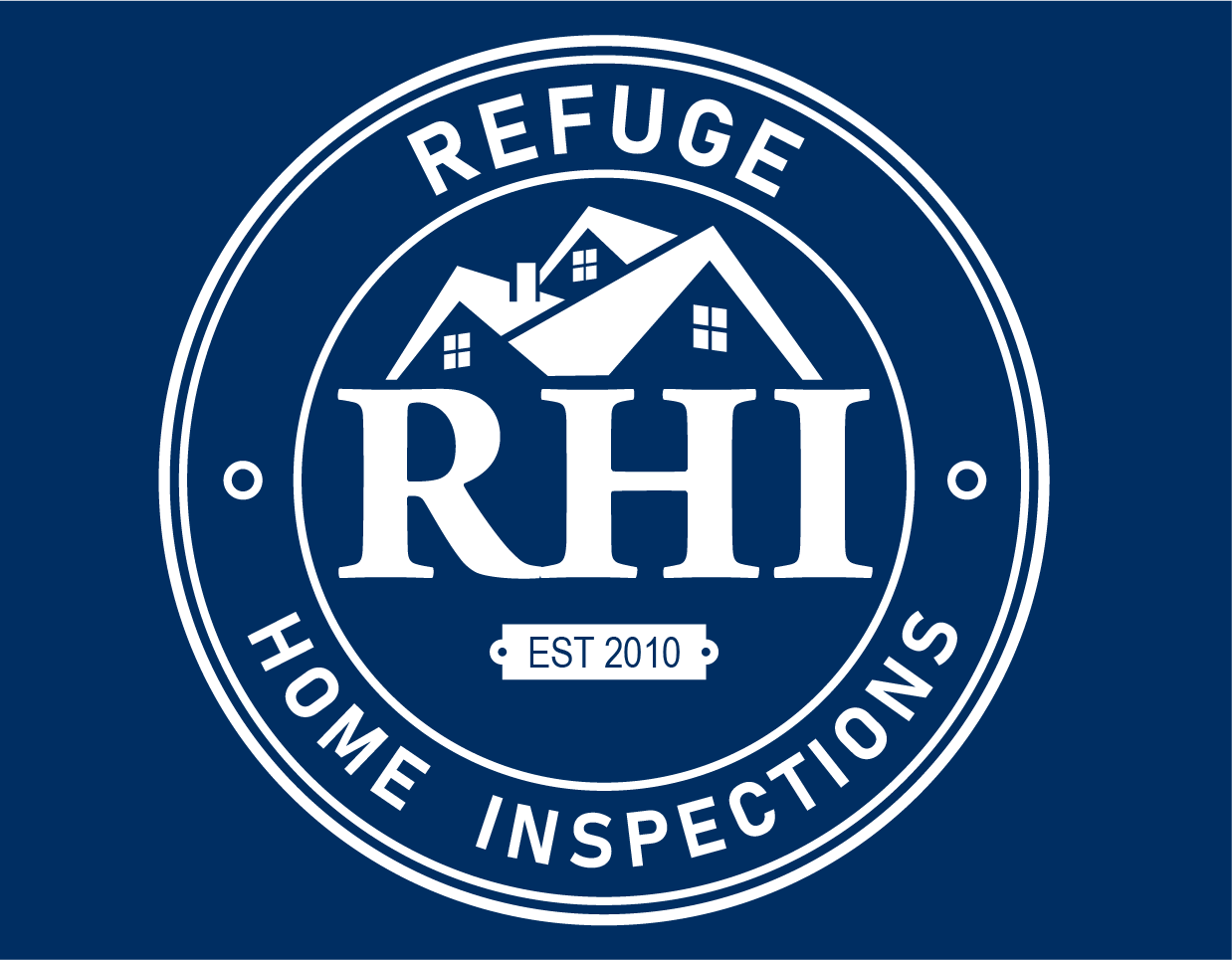
Radon is very prevalent and dangerous in our area, yet not many people have heard about it. When levels are tested in the home, the higher the number, the greater the risk of Radon’s number one side effect…lung cancer. That’s right! Radon is the number one cause of lung cancer for non-smokers. The odds are also greater for lung cancer in people who smoke and live in a home with higher radon levels. Radon is believed to kill more than 20,000 people annually. Educating others about this silent killer can be a lifesaver, literally.
Radon is an odorless, colorless gas that naturally occurs from Radium deep in the bedrock underground. The Radium decays over time and breaks down. One of the byproducts is Radon gas. The Radon gas rises out of the ground naturally. It is everywhere. It is in our homes, as well as outside. The difference between being outside and in our home is the ability to mix with fresh air. The gas is nine times denser than air, so it can easily be trapped and concentrated in spaces. Radon can be found in homes that have a basement, crawlspace, or even a slab foundation. Radon is more likely to accumulate in homes that are tightly sealed, are well insulated, or in homes located where there is more Radium, Thorium, and Uranium in the soil. Radon can come in through holes or cracks in the foundation and then become trapped inside. Radon can also get into your home through well water.
When RHI tests for Radon, your inspector will set up a Radon machine or a continuous Radon monitor on the lowest level of the home that can be occupied. It will run continuously for at least 48 hours. The windows of the home should remain closed, and any fans that could bring outdoor air in should not be used during the testing. Once the testing is complete, your inspector will collect the machine and create a report for you to show the results. If results show the Radon levels are below 4pCi/L, then levels are considered safe, and your inspector would not recommend any further action at that time. If the Radon levels show levels higher than 4 pCi/L at the time of testing, you should look at your options to reduce or mitigate the Radon in the home.
If you do a test and find that the levels are elevated (over 4.0 pCi/L), then installing a removal system is recommended. Some contractors are certified to install these systems. The first step is to try and locate areas that are allowing ground air in more easily. Cracks in foundation, interior drainage systems with an open-drain or sump pit, or a crawlspace without a vapor barrier, just to name a few. Once these areas are sealed off, a system is installed to draw the underground air through the Radon fan and out of the house. This is a lot like the moisture being pulled out of a bathroom with an exhaust fan. If your levels were high and a system was put in place, an additional test should be done to ensure the system has lowered the levels into the safe zone. Keep in mind that it is almost impossible to completely remove Radon 100% from the home.
Radon is everywhere, but when captured, it can rise to harmful levels. If you have high levels, your neighbor probably does, too due to your area. Since humans and animals are unable to detect Radon without a specific test, it is a good idea to have your home tested, especially if the area is known to have high levels. Radon is a silent killer and is the number one cause of lung cancer for non-smokers. However, testing is easy and affordable. If unsafe levels of Radon are found, remediation is possible. Once mitigated, it is also a smart idea to test annually to ensure levels have not risen to unsafe levels again. This should not happen, but it is always a possibility as it is a naturally occurring gas. In the end, keeping your family and pets safe is the most important aspect to consider when deciding if you should test your home.

